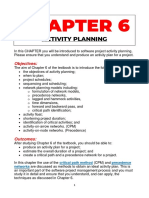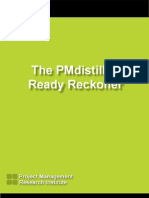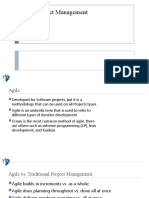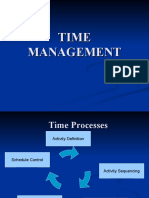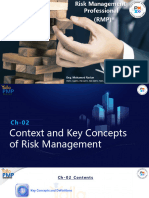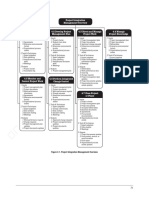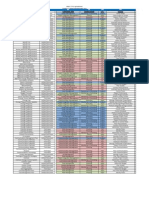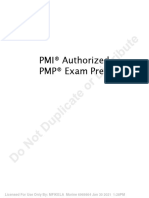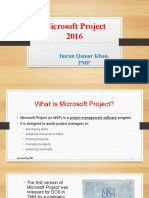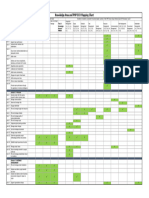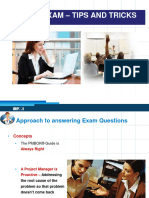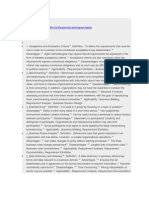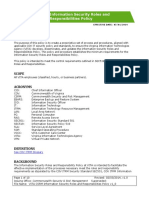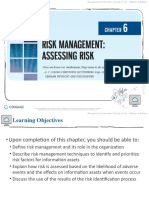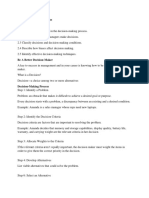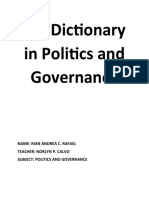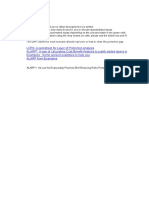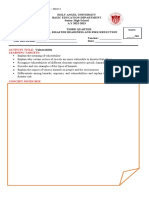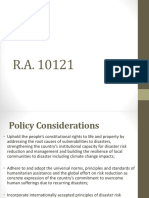Expert judgment
Facilitation techniques
Project management
information system
Meetings
Analytical Techniques
Work performance reports
Change Control Tools
1 Interviews
2 Focus groups
3 Facilitated workshops
4 Group creativity techniques
�5 Group decision-making techniques
6 Questionnaires and surveys
7 Observations
8 Prototypes
10 Context diagrams
11 Document analysis
Product Analysis
Alternatives Generation
Decomposition
Inspection
Rolling Wave Planning
Precedence Diagramming Method
Dependency Determination
Leads and Lags
Alternative Analysis
Published Estimating Data
Bottom-Up Estimating
Project Management Software
Analogous Estimating
Parametric Estimating
Three-Point Estimating
Schedule Network Analysis
Critical Path Method
Critical Chain Method
Resource Optimization Techniques
Modeling techniques
Leads and Lags
Schedule Compression
Scheduling Tool
Performance reviews
�financial Analytical Techniques
Vendor Bid Analysis
.1 Cost aggregation
Historical relationships
Funding limit reconciliation
Earned Value Management
.1 Cost-benefit analysis
.2 Cost of quality
.3 Seven basic quality tools
.4 Benchmarking
.5 Design of experiments
.6 Statistical sampling
.7 Additional quality planning tools
Force field analysis
Quality management and control tools
.1 Quality management and control tools
.2 Quality audits
.3 Process analysis
Approved change requests review
.1 Organization charts and position descriptions
.2 Networking
.3 Organizational theory
.1 Pre-assignment
.2 Negotiation
.3 Acquisition
.4 Virtual teams
.5 Multi-criteria decision analysis
.1 Interpersonal skills
.2 Training
.3 Team-building activities
.4 Ground rules
.5 Colocation
.6 Recognition and rewards
.7 Personnel assessment tools
1 Observation and conversation
.2 Project performance appraisals
.3 Conflict management
Organization Charts and Position Descriptions
.1 Communication requirements analysis
.2 Communication technology
.3 Communication models
�.4
.4
.5
.1
.2
.3
.4
.5
Communication methods
Information management systems
Performance reporting
Documentation reviews
Information gathering techniques
Checklist analysis
Assumptions analysis
Diagramming techniques
.6 SWOT analysis
.1
.2
.3
.4
.5
Risk probability and impact assessment
Probability and impact matrix
Risk data quality assessment
Risk categorization
Risk urgency assessment
.1 Data gathering and representation techniques
.2 Quantitative risk analys and
modeling techniques
.1 Strategies for negative risks or threats
.2 Strategies for positive risks or opportunities
.3 Contingent response strategies
.2 Risk audits
.3 Variance and trend analysis
.4 Technical performance measurement
.5 Reserve analysis
.1 Make-or-buy analysis
.3 Market research
.1 Bidder conference
.2 Proposal evaluation techniques
.3 Independent estimates
.5 Advertising
.6 Analytical techniques
.7 Procurement negotiations
.1 Contract change control system
.2 Procurement performance reviews
.3 Inspections and audits
.4 Performance reporting
.5 Payment systems
.6 Claims administration
.7 Records management system
.1 Procurement audits
.2 Procurement negotiations
�Brainstorming, conflict resolution, problem solving, and meeting
management
which is part of the enterprise environmental factors, provides
access to tools, such as a scheduling tool, a work authorization system, a configuration management
information collection and distribution system, or interfaces to other online automated systems.
performance indicators (KPI) can be part of this system
Meetings tend to be one of three types:
Information exchange;
Brainstorming, option evaluation, or design; or
Decision making.
Regression analysis,
Grouping methods,
Causal analysis,
cause analysis,
Forecasting methods (e.g., time series, scenario building, simulation, etc.),
Failure mode and effect analysis (FMEA),
Fault tree analysis (FTA),
Reserve analysis,
Trend analysis,
Earned value management, and
Variance analysis.
resource availability, schedule and cost data, earned value management (EVM) reports, and
burnup or burndown charts
joint application design/development (JAD) ,quality
function deployment (QFD)
Brainstorming. A technique used to generate and collect multiple ideas related to project and produ
requirements. Although brainstorming by itself does not include voting or prioritization, it is often used
with other group creativity techniques that do.
Nominal group technique. A technique that enhances brainstorming with a voting process used to ra
the most useful ideas for further brainstorming or for prioritization.
Idea/mind mapping. A technique in which ideas created through individual brainstorming sessions a
consolidated into a single map to reflect commonality and differences in understanding, and generate
new ideas.
Affinity diagram. A technique that allows large numbers of ideas to be classified into groups for revie
and analysis.
Multicriteria decision analysis. A technique that utilizes a decision matrix to provide a systematic
analytical approach for establishing criteria, such as risk levels, uncertainty, and valuation, to evaluat
and rank many ideas
� Unanimity. A decision that is reached whereby everyone agrees on a single course of action. One wa
reach unanimity is the Delphi technique, in which a selected group of experts answers questionnaires
provides feedback regarding the responses from each round of requirements gathering. The response
are only available to the facilitator to maintain anonymity.
Majority. A decision that is reached with support obtained from more than 50 % of the members of th
group. Having a group size with an uneven number of participants can ensure that a decision will be
reached, rather than resulting in a tie.
Plurality. A decision that is reached whereby the largest block in a group decides, even if a majority
not achieved. This method is generally used when the number of options nominated is more than two
Dictatorship. In this method, one individual makes the decision for the group.
known as job shadowing
Prototypes support the concept of progressive elaboration in iterative cycles of mock-up creation,
user experimentation, feedback generation, and prototype revision. Storyboarding is a prototyping tec
series of images or illustrations.
Product analysis includes techniques such as product breakdown, systems
analysis, requirements analysis, systems engineering, value engineering, and value analysis
A variety of general management techniques
can be used, such as brainstorming, lateral thinking, analysis of alternatives, etc
Inspections are sometimes called reviews,
product reviews, audits, and walkthroughs , peer reviews
Finish-to-start (FS). Finish-to-finish (FF) Start-to-start (SS) Start-to-finish (SF).
mandatory or discretionary, internal or external
Trend analysis Critical path method
Critical chain method
Earned value management
�payback period, return on investment, internal rate of
return, discounted cash flow, and net present value
Cause-and-effect diagrams Flowcharts Checksheets
Pareto diagrams
Affinity diagrams Process decision program charts (PDPC).
diagrams Matrix diagrams
Histograms, Control charts
Interrelationship digraphs. Tree diagram
Interpersonal skills, sometimes known as soft skills, communication skills, emotional intelligence, c
building, and
group facilitation.
Colocation, also referred to as tight matrix,
attitudinal surveys, specific assessments, structured interviews, ability tests, and focus groups
Hierarchical-type charts.
Matrix-based charts.
Text-oriented formats.
�Brainstorming Delphi technique. Interviewing.
Root cause analysis.
Assumptions analysis explores the validity of assumptions as they apply to the project
Cause and effect diagrams(Ishikawa or fishbone diagrams) , System or process flow charts
Influen
This technique examines the project from each of the strengths, weaknesses, opportunities, and threa
identified risks by including internally generated risks.
Interviewing. Probability distributions ( Continuous probability distributions, Discrete distributions) -distributions are Beta & triangula distribution----------------Uniform distributions can be used if there is
between specified high and low bounds, such as in
the early concept stage of design
Sensitivity analysis(Tornado Diagram), Expected monetary value analysis , Modeling and simulation
�Time Table (Khadijah )
After Maghrib-Isha Prayer After Isha (1 Hour)
Sunday
Urdu (Study Test if any)
EVS
Monday
EVS (Study Test if any)
Hindi
Tuesday
Hindi (Study Test if any)
English
Wednesday
English (Study Test if any)
Urdu
Thursday
Holiday (Islamic)
Friday
Holiday (Islamic)
Saturday
Urdu (Study Test if any)
Maths
Friday & Staurday(Morning)
10.AM
1PM-2PM
Friday(Morning)
Quran
Maths
Saturday(morning)
Quran
Maths
�1 Hour
Maths
Maths
EVS
Hindi
Islamic
2PM-3.30PM
English
Urdu




